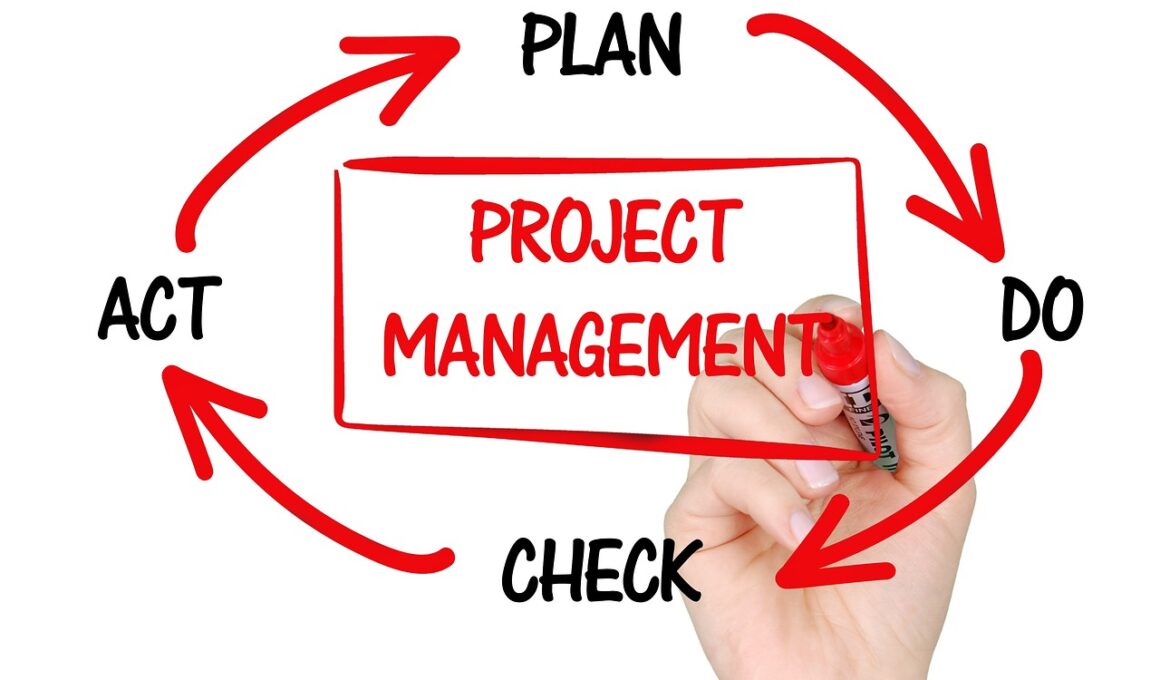Client Engagement Strategies in Waterfall Project Delivery
Effective client engagement is crucial for successful project delivery, particularly within the Waterfall methodology. This approach is characterized by distinct phases, allowing for detailed planning and execution. Engagement begins at project initiation, where understanding client requirements is essential. Collaborating early results in a shared vision and sets expectations, ensuring client needs are addressed throughout the project lifecycle. Regular communication is vital to maintain transparency, and scheduled updates can significantly enhance client trust. These updates allow clients to provide feedback, which can be especially valuable when reviewing any potential changes that may arise during the execution phase. Utilizing tools like project management software can streamline interactions, enabling both teams to stay aligned on objectives. Structured feedback sessions should be built into the project schedule to facilitate a responsive environment that adjusts to changing client requirements. Additionally, fostering strong relationships with stakeholders through active listening and responsiveness is fundamental to engagement. By acknowledging the client’s insights, project teams can tailor efforts to create a product that reflects their vision. Engaging clients effectively can lead to improved satisfaction, ultimately resulting in favorable outcomes for both parties involved.
Another essential aspect of engaging clients in Waterfall project management involves establishing clear communication channels. These channels should be used to share project updates, milestones, and any potential risks or issues that may arise. Project managers should encourage an open dialogue, ensuring clients feel comfortable discussing their concerns or feedback throughout the process. Meeting regularly, whether face-to-face or virtually, can help to foster this open communication. Additionally, project managers must be proactive in addressing any concerns raised by clients while demonstrating a commitment to resolving issues swiftly. Using visual aids and project timelines can also enhance understanding and keep clients informed of progress. Furthermore, engaging clients in planning stages allows them to share their insights, adding value to the project. Tailoring communication styles to cater to each client’s preferences can also enhance engagement efforts. For example, some clients may prefer detailed reports, while others may value brief updates. Always consider these preferences when developing a communication strategy. Leveraging these strategies can increase client engagement significantly, which is vital for fostering a collaborative working environment and ensuring project success.
Involvement in Decision-Making
Involving clients in key decision-making processes is another excellent strategy for Waterfall project management. This inclusion helps clients feel valued and fosters a sense of ownership over the project’s direction. By providing clients with opportunities to contribute to major decisions, project teams can create an atmosphere of collaboration and trust. Engaging clients in discussions about critical changes or adjustments allows them to voice their opinions and influence project outcomes positively. Additionally, it can help identify potential issues early on, enabling proactive solutions. Visuals, such as Gantt charts, can assist in presenting options effectively, making discussions clearer. Regular workshops or brainstorming sessions can also keep clients engaged and invested in the project’s success. This active participation is critical as Waterfall processes rely on sequential phase completion. When clients are involved, they can ensure their needs are met before proceeding to the next stage. Ultimately, this approach promotes collaboration that can lead to innovative solutions and a final product better aligned with the client’s expectations. Thus, nurturing a decision-making framework that includes clients can significantly enhance project success rates.
Additionally, implementing structured client feedback mechanisms is crucial to Waterfall project delivery. These mechanisms serve to capture client insights at various project phases, particularly after significant milestones. By actively soliciting client feedback, project managers can ensure that their expectations align with project outputs. For effective feedback collection, utilizing regular surveys or interviews with clients is advantageous. These tools can be designed to assess satisfaction levels, gather suggestions, and identify areas for improvement. Moreover, setting up review meetings post-delivery phases allows for direct conversations about clients’ experiences with the project progress. Emphasizing a willingness to listen and adapt based on client feedback can build strong relationships. Addressing concerns and showcasing changes made based on client suggestions demonstrates commitment to their needs. Including feedback loops in the project timeline enhances overall engagement and builds trust. By ensuring that clients know their input has merit, project teams can foster a more collaborative working relationship. Ultimately, these structured feedback processes not only enhance client satisfaction but also contribute to better project outcomes and solutions that truly reflect client needs.
Documentation of Engagement
Documenting client engagement activities is another essential strategy within Waterfall project management. Maintaining thorough documentation provides a clear record of all interactions, decisions, and changes. This allows for better tracking of client expectations and helps avoid misunderstandings. Detailed project documentation can guide future engagement strategies, identifying what worked well or needed refinement. Furthermore, maintaining a historical record assists in evaluating project success from the client’s perspective. Including key feedback points in project documentation ensures that all team members stay aligned with client needs and adjustments made throughout the project. Additionally, using project management software for shared documentation can enhance transparency and collaboration. Clients can also access project updates and contribute feedback directly, further emphasizing their involvement. Regularly reviewing engagement documentation during team meetings allows teams to remain aware of client sentiments. This proactive approach leads to timely adjustments that can directly benefit project outcomes. Therefore, prioritizing proper record-keeping not only enhances communication and collaboration with clients but also promotes continued success in future Waterfall projects.
Building trust is a fundamental element in client engagement strategies, especially within the Waterfall project framework. Trust can be cultivated by delivering on promises and ensuring transparency throughout the project lifecycle. Project teams should communicate challenges and successes with clients, fostering an environment where honesty prevails. Regularly updating clients on progress reinforces their confidence in the project team’s capabilities. Strong relationships built on trust enable smoother project execution and create opportunities for additional work in the future. Furthermore, it’s vital to acknowledge client concerns genuinely when they arise. This acknowledgement demonstrates respect for their opinions and the project’s overall success. Implementing a culture of accountability ensures that team members are responsible for delivering quality outcomes. Agile methodologies are sometimes thought to constrain Waterfall practices, but they emphasize responsive client engagement. Incorporating flexibility within the traditionally linear approach can thus enhance client satisfaction. Ultimately, trust and respect are cornerstones of effective client engagement in Waterfall project management. By prioritizing these elements, project teams can foster stronger client relationships, leading to improved collaboration, positive results, and enhanced project outcomes.
Conclusion
In conclusion, effective client engagement strategies are critical for successful Waterfall project delivery. Each of the approaches discussed, from early involvement and active communication to feedback mechanisms and trust-building, plays a significant role. Adopting best practices such as structured communication, feedback loops, and maintaining documentation contributes to stronger client relationships. Involving clients in decision-making not only empowers them but also ensures their perspectives are considered. The focus on transparency and accountability helps establish a collaborative work environment that is conducive to project success. Project managers should embrace their responsibility to engage clients consistently, fostering a partnership that leads to mutual benefits. Exploring client engagement in each phase of a Waterfall project can reveal valuable insights, promoting continuous improvement. Ultimately, by implementing these strategies, project teams can achieve a final product that meets client expectations and enhances overall satisfaction. Investing time in client engagement is not merely an additional step; it is essential for achieving successful project outcomes. Therefore, prioritizing these strategies during project execution will improve both the process and the results for clients, delivering a truly desired product.
By effectively engaging clients in a Waterfall project, a collaborative atmosphere is fostered that promotes creativity and innovation. When clients feel empowered to share their perspectives, they contribute to the quality of the final deliverable. Successfully implemented engagement strategies can lead to positive recommendations and future partnerships. Thus, project teams should recognize the importance of strategic client engagement throughout their Waterfall projects.


